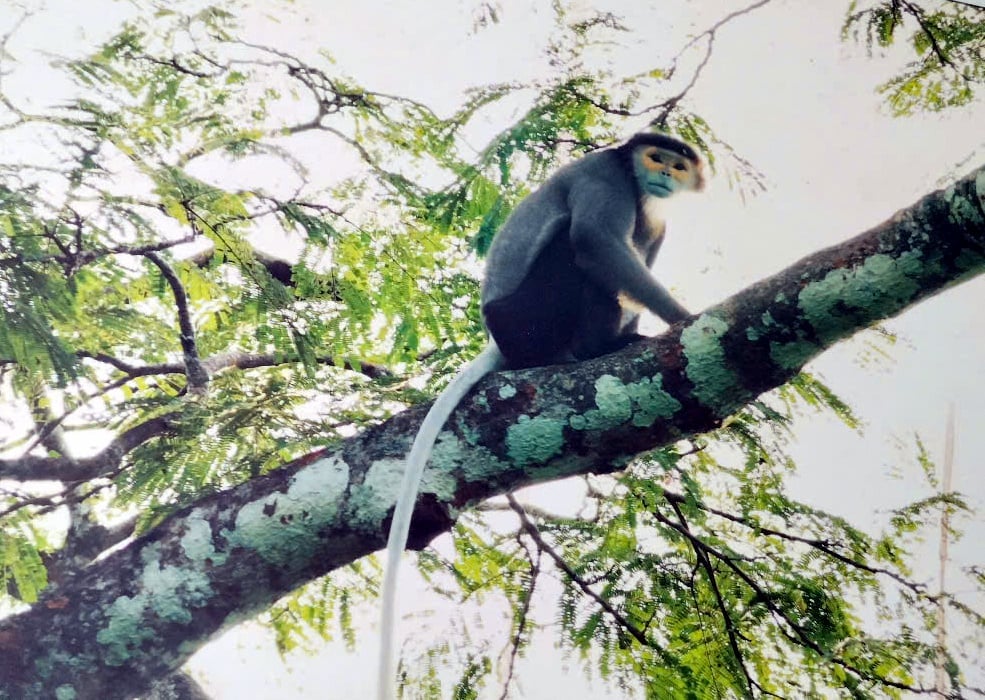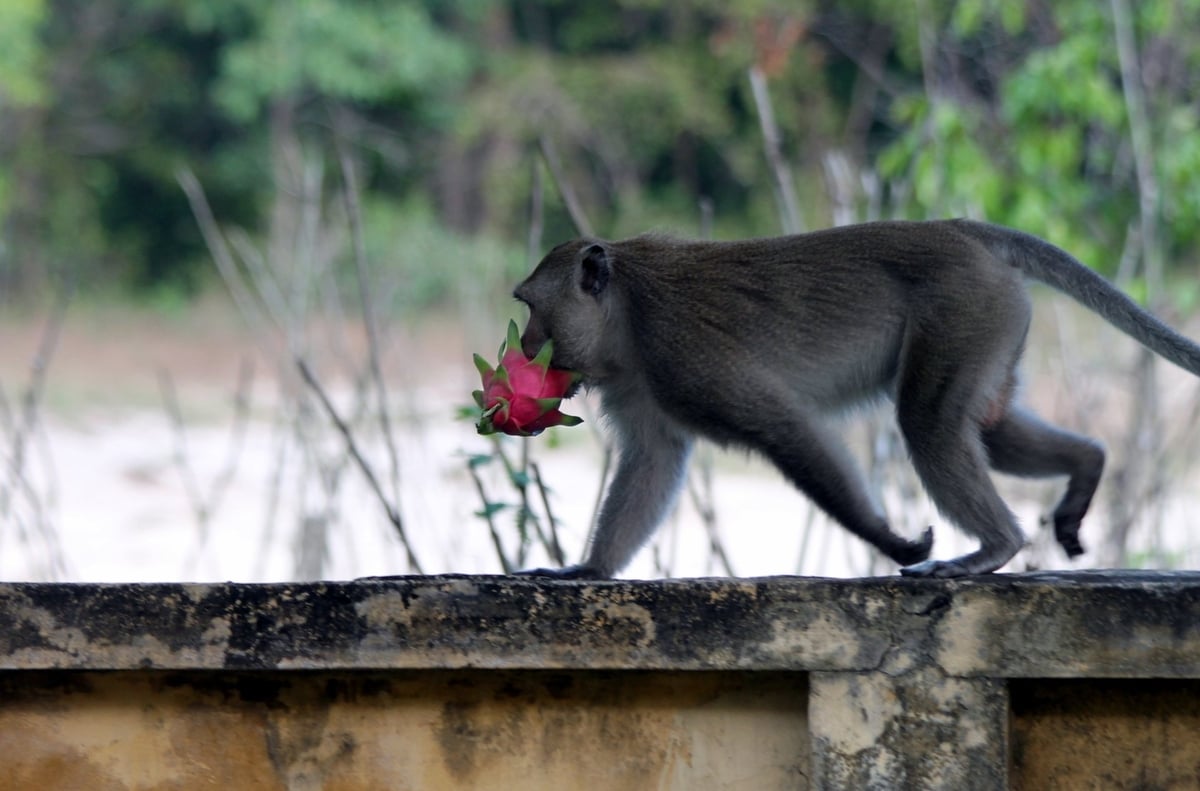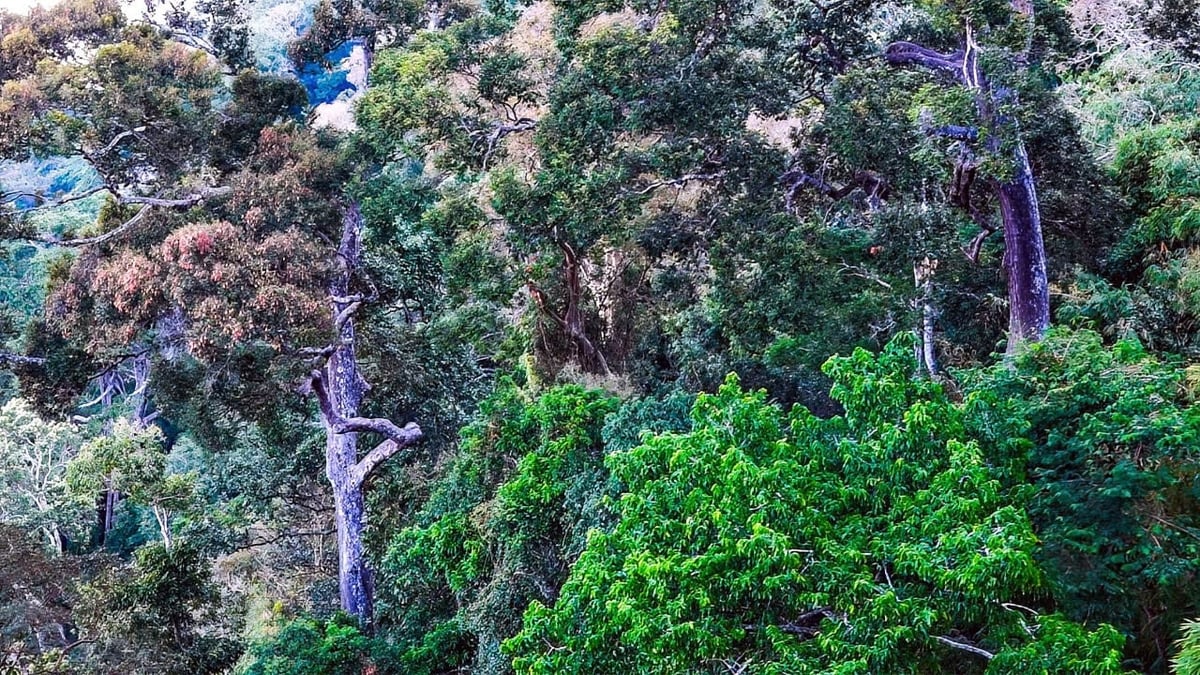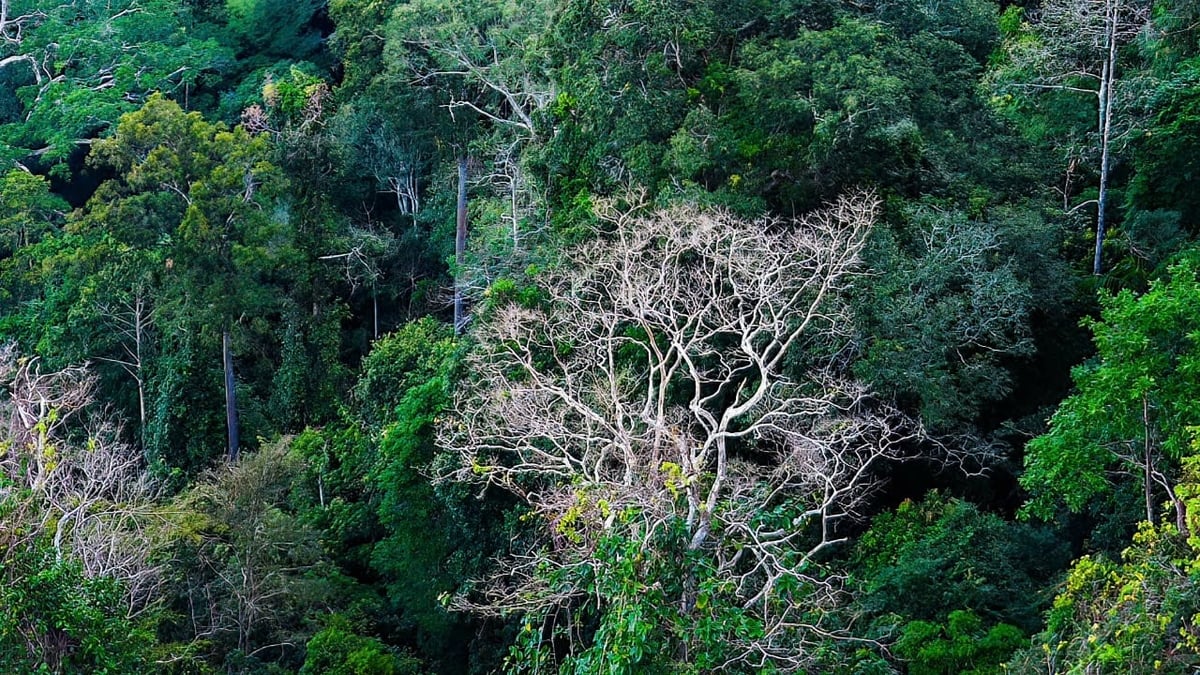October 31, 2025 | 05:19 GMT +7
October 31, 2025 | 05:19 GMT +7
Hotline: 0913.378.918
October 31, 2025 | 05:19 GMT +7
Hotline: 0913.378.918
Located within the mountain ranges and sunlit coastal plains of Lam Dong Province, the Ta Kou Nature Reserve possesses a rich and varied ecosystem of plant and animal life, highlighting its significant importance for conservation efforts and research.

Black-shanked douc langur in Ta Kou forest, Lam Dong province.
The region's landscape features a broad range of ecosystems, including lowland evergreen tropical forests, semi-deciduous mountain forests, and dry-season deciduous broadleaf forests on slopes. In addition, open forests of Dipterocarp species can be found along the coastal plains. Scientists have classified the coastal Dipterocarp forests as an urgently needed conservation landscape (SA7), highlighting their uniqueness and the critical genetic resources they provide for the restoration of degraded coastal forests.
The rich ecological diversity has fostered an ideal habitat for thousands of species. Mr. Ha Van Tuan, the Acting Director of the Ta Kou Nature Reserve, reports that the reserve is home to around 1,200 identified species of higher plants. Ta Kou is home to several important plant families such as Fabaceae, Euphorbiaceae, Rubiaceae, and Orchidaceae. At least 33 rare plant species, including Dalbergia cochinchinensis, Hopea odorata, Cycas spp., and Dipterocarpus spp., are documented in the IUCN Red List and Vietnam’s Red Data Book, highlighting the significant conservation value of the area.

Long-tailed macaques are also recorded in Ta Kou forest.
The reserve serves as a sanctuary for a variety of 287 animal species. This includes 62 mammals, 135 birds, 65 reptiles, 25 amphibians, and nearly 200 species of insects. At least 32 rare and endangered species have been confirmed to inhabit the area, including the black-shanked douc langur, Truong Son silvered langur, rhesus macaque, Edwards's pheasant, clouded monitor, softshell turtle, and caecilian frogs. These species not only represent Ta Kou’s biological richness but also highlight the urgent need for focused conservation efforts.
Highlighting the ecological importance of Ta Kou, Mr. Tuan emphasized that the reserve management board has put in place a wide array of strategies, including public awareness campaigns and rigorous patrolling and monitoring efforts.
Messages regarding environmental protection and forest conservation are consistently conveyed through diverse formats, enhancing the awareness and engagement of local communities. Anti-deforestation and land encroachment measures are systematically implemented, with increased patrols to detect and stop illegal activities in time. Forest protection contracts have demonstrated their effectiveness by alleviating local livelihoods while fostering community responsibility and engagement.
During the dry season each year, forest fire prevention becomes a key priority. Plans and response teams have been put in place, guaranteeing continuous monitoring at all hours. Firebreak construction and controlled burns are implemented as measures to decrease fuel loads. As a result, forest fires are detected early and managed effectively, minimising damage.

Ta Kou forest has a diverse ecosystem.
“In recent years, our focused efforts in forest protection and restoration have led to a noticeable recovery in wildlife diversity. Observing young individuals from rare species such as long-tailed macaques and Truong Son silvered langurs is a promising sign of population rebound. The reserve has also rescued and released several rare animals back into the wild, including the brown-shanked douc, king cobra, and pangolin”, Mr. Tuan shared.
The reserve has started significant reforestation efforts on barren hills and degraded lands, bolstered by support from the state budget, NGOs, and the local community. These initiatives aim to control sand drift and improve climate resilience.
Despite encouraging progress, conservation at Ta Kou faces numerous challenges. The reserve manages over 10,400 hectares of forest in rugged terrain interspersed with residential areas, complicating monitoring efforts. Manpower remains limited, and operational infrastructure is under-resourced.

Beautiful forest scenery in Ta Kou.
Moreover, although awareness campaigns have been conducted, some local residents still lack understanding of forest protection laws, leading to ongoing illegal logging and wildlife hunting. The emerging threat of trees being poisoned with chemicals is especially alarming and difficult to detect and address promptly.
To tackle these issues, Ta Kou’s management board believes that stronger and more coordinated action is necessary. Provincial authorities are urged to allocate more personnel and equip forest protection stations with adequate tools and technology.
On the ground, the reserve plans to diversify its outreach efforts, tailoring messages to specific community groups, especially villages near forest areas, to enhance legal compliance and community engagement.
Strict enforcement against illegal logging, hunting, and unauthorised land conversion is essential to deter future violations. Crucially, developing and implementing sustainable livelihood models for buffer zone communities is key to fostering long-term forest stewardship and reducing dependence on natural resource exploitation.
Translated by Linh Linh

(VAN) The collaboration between local agricultural extension forces and businesses is the foundation for effectively implementing the one-million-hectare high-quality, low-emission rice project.

(VAN) Minister Tran Duc Thang affirmed that the Ministry of Agriculture and Environment remains steadfast in its goal of green and sustainable development, laying the foundation for double-digit growth in the 2026-2030 period.

(VAN) Sustainable rice production requires a comprehensive soil management strategy, the application of technology, value chain linkages, and integrated economic, social, and environmental solutions.

(VAN) Kim Anh commune (Hanoi) is shifting to biosecure livestock farming to improve product quality and increase sustainable economic value.

(VAN) Early on October 30, all relief supplies from the Russian Federation arrived at Noi Bai Airport and immediately transported to Hue City during its peak of the flooding.

(VAN) According to Deputy Minister Nguyen Hoang Hiep, just 20 days after the appeal was launched, Viet Nam received assistance from 30 countries and international organizations, with a total value of USD 9.7 million.

(VAN) SEAMAP and ROMONA sign a 2025 - 2028 Memorandum of Understanding, marking a new chapter in Viet Nam’s marine geodesy and positioning technology development.